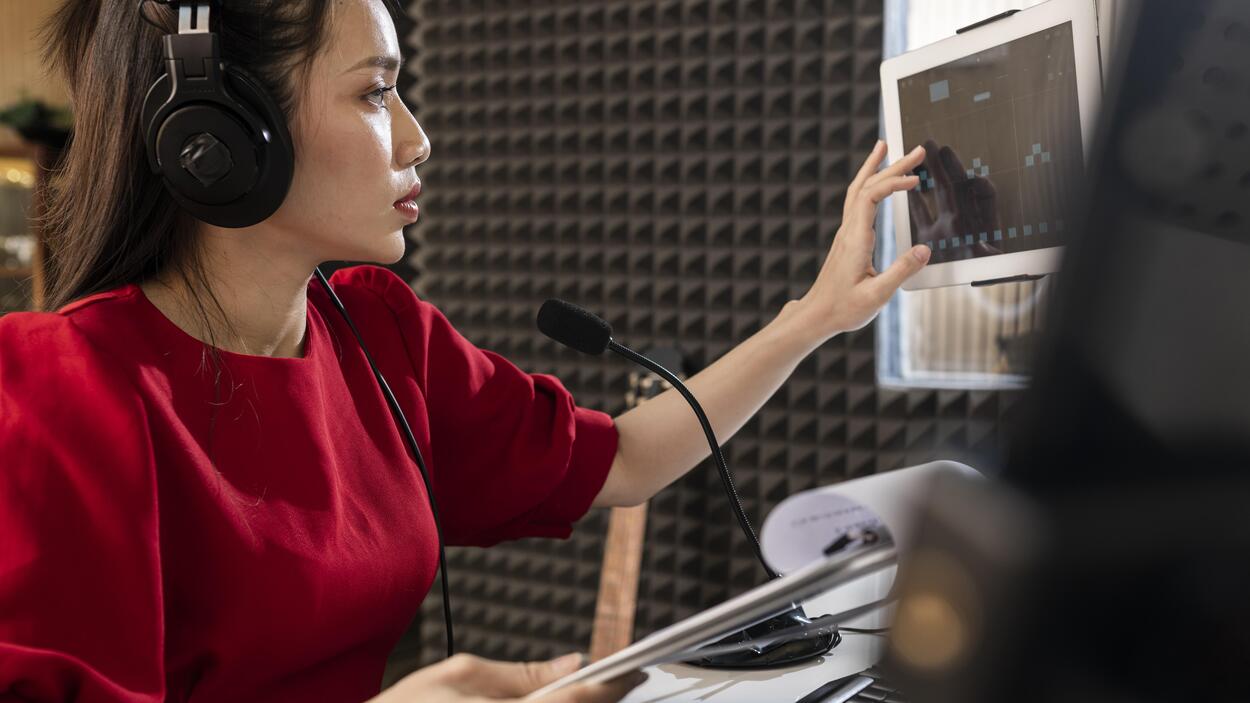Digital Twins in Broadcasting: Revolutionizing the Future of Content Production

As someone deeply involved in broadcasting technology, I've observed the rapid evolution of our industry, especially regarding innovative tools like digital twins. Just a few years ago, creating broadcast events required extensive physical preparations, costly rehearsals, and significant resources.
Today, digital twins are completely transforming this landscape, enhancing efficiency, lowering costs, and unleashing creative possibilities. At Promwad, we've embraced digital twin technology to support broadcasters in streamlining their production processes, and the impact has been nothing short of transformative.
Understanding Digital Twins
Digital twins are virtual replicas of physical environments, assets, or processes. In broadcasting, digital twins create precise digital representations of studios, equipment setups, and event venues, allowing producers and engineers to experiment and refine ideas virtually before physical implementation.
The Importance of Digital Twins in Broadcast Production
From my perspective, digital twins address some of broadcasting’s most significant challenges, particularly in terms of cost management, risk reduction, and creative exploration. They allow teams to simulate camera angles, lighting setups, stage designs, and audience interaction scenarios before committing to physical production, dramatically cutting down costs and saving time.
How Digital Twins Are Changing Broadcast Production
The practical advantages of digital twins are remarkable:
- Reduced Production Costs: Companies leveraging digital twins can reduce pre-production expenses by up to 40%.
- Enhanced Efficiency: Digital twins enable faster iterations, ensuring that any production adjustments can be made swiftly without the need for physical resources.
- Improved Creativity: Directors and producers can freely experiment with innovative visual concepts, pushing creative boundaries without incurring additional costs.
| Production Aspect | Traditional Approach Time | Digital Twin Approach Time |
| Set Design Preparation | 3-4 weeks | 1-2 weeks |
| Camera Setup Testing | 2-3 days | 2-3 hours |
| Lighting Configurations | 1-2 weeks | 1-2 days |
Real-World Success Stories
- BBC’s Virtual Studio: In 2025, BBC successfully utilized digital twin technology for their election night broadcasts, allowing them to virtually plan and simulate multiple broadcast scenarios. This approach streamlined production significantly, enhancing the live broadcast experience.
- NBC’s Sports Events: NBC has been pioneering digital twins in their Olympic Games coverage, simulating complex venue setups and camera positions months before the actual event, resulting in smoother operations and superior live broadcasts.

Voices from the Field: Personal Experiences
Digital twins have profoundly impacted professionals across the industry:
- "Using digital twins for our music award show made everything easier—no guesswork, no stress, just perfect preparation and execution." — Lucas, Production Director, Germany.
- "Our broadcast production timelines are shorter and our creative ideas bolder, thanks to the possibilities offered by digital twin simulations." — Priya, TV Producer, India.
- "Being able to experiment virtually has unleashed our creative team's full potential, resulting in better shows and higher viewer engagement." — Jake, Creative Director, USA.
Addressing the Challenges
Despite their benefits, digital twins also present certain challenges:
- Complex Implementation: Initially, creating accurate digital twins requires significant technical expertise and investment.
- Data Management: Effectively managing and updating data to ensure digital twins remain accurate representations is crucial.
- Skill Development: Teams must be adequately trained to leverage digital twin technology effectively.
At Promwad, we tackle these challenges by offering comprehensive training, ongoing technical support, and tailored solutions to ensure smooth integration and usage of digital twins.
The Future of Digital Twins in Broadcasting
Looking forward, the possibilities for digital twins in broadcasting are incredibly exciting:
- Enhanced Predictive Capabilities: Digital twins will incorporate predictive analytics to anticipate issues before they occur, further streamlining production processes.
- Virtual Audience Integration: Digital twins will increasingly simulate audience interactions and behaviors, providing producers with valuable insights to optimize viewer experiences.
- AI-Enhanced Digital Twins: Integration with AI will allow digital twins to autonomously suggest optimizations and improvements in production processes.
Upcoming Events: Explore Digital Twins Firsthand
Several upcoming industry events offer valuable opportunities to explore and discuss digital twins in broadcasting:
- NAB Show 2025 (April, Las Vegas, USA): Dedicated sessions on digital twins, live demos, and real-world case studies from leading broadcasters.
- IBC 2025 (September, Amsterdam, Netherlands): Innovations in digital twins showcased through immersive experiences and expert panels.
- Digital Twin World Congress 2025 (October, Berlin, Germany): An event exclusively focused on digital twin technology, featuring discussions on future applications and best practices.
These events are essential for broadcasters looking to leverage digital twins effectively and stay ahead in the evolving industry landscape.
Final Thoughts: A New Era of Broadcast Production
From my viewpoint, digital twins signify much more than technological innovation—they represent a fundamental shift in how we approach broadcast production. By adopting digital twins, broadcasters can achieve unprecedented efficiency, creativity, and cost-effectiveness.
At Promwad, we're proud to facilitate this exciting evolution, providing broadcasters with the powerful tools they need to thrive in this rapidly advancing industry. Embracing digital twin technology isn't just about improving the bottom line; it's about enabling broadcasters to deliver richer, more innovative, and engaging content to audiences worldwide.
